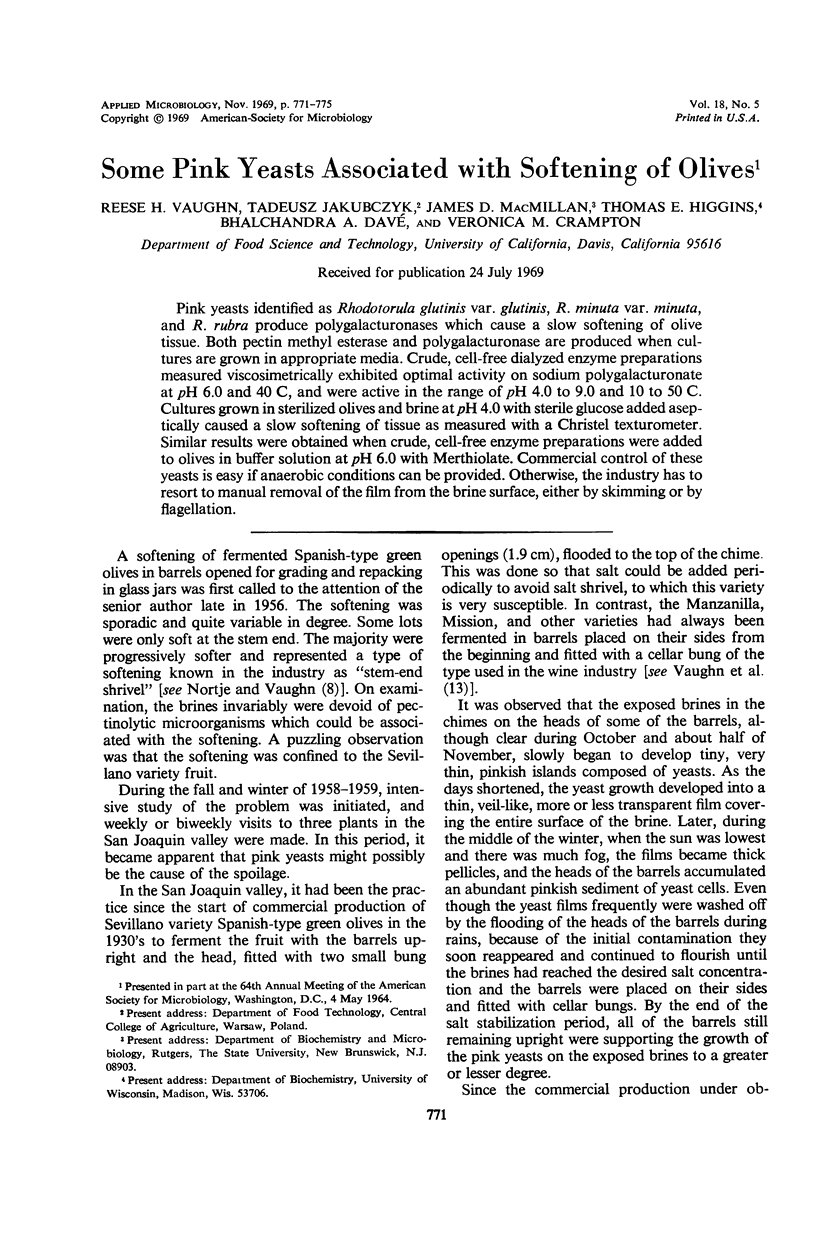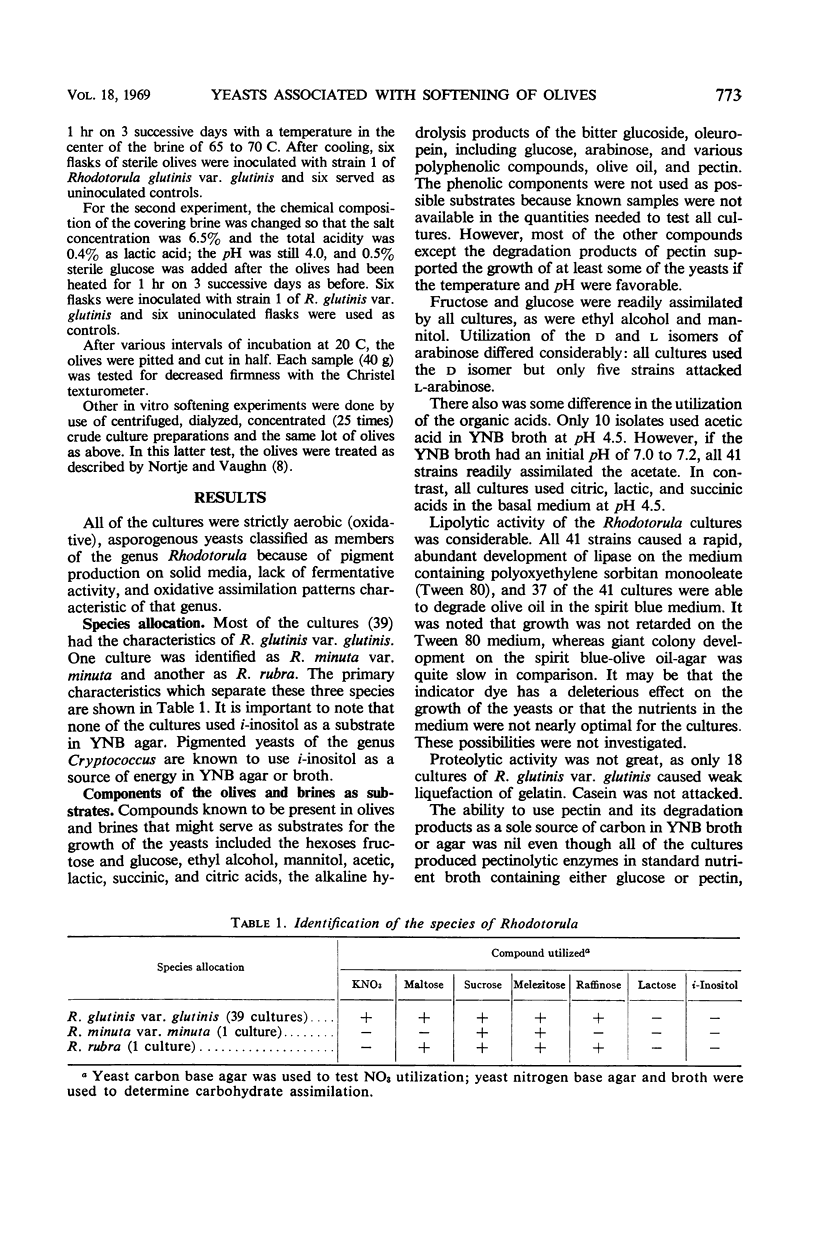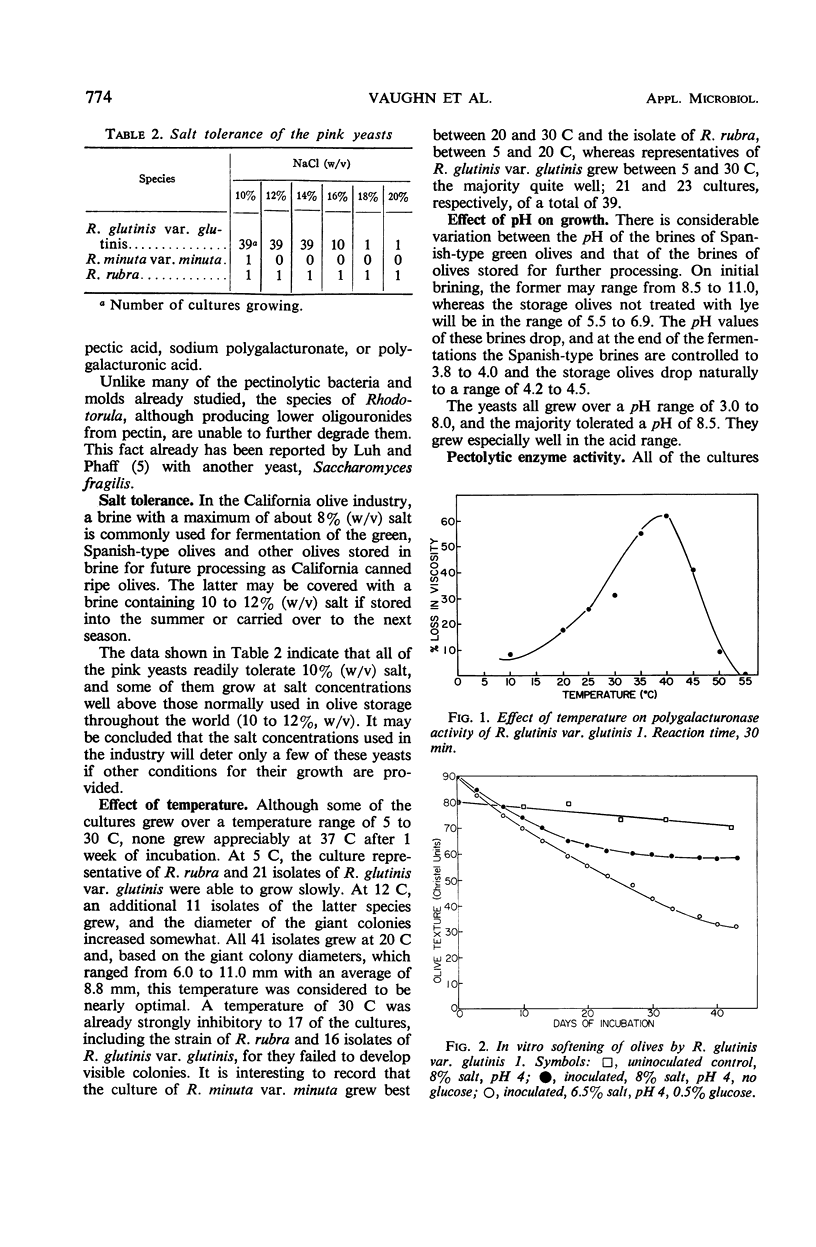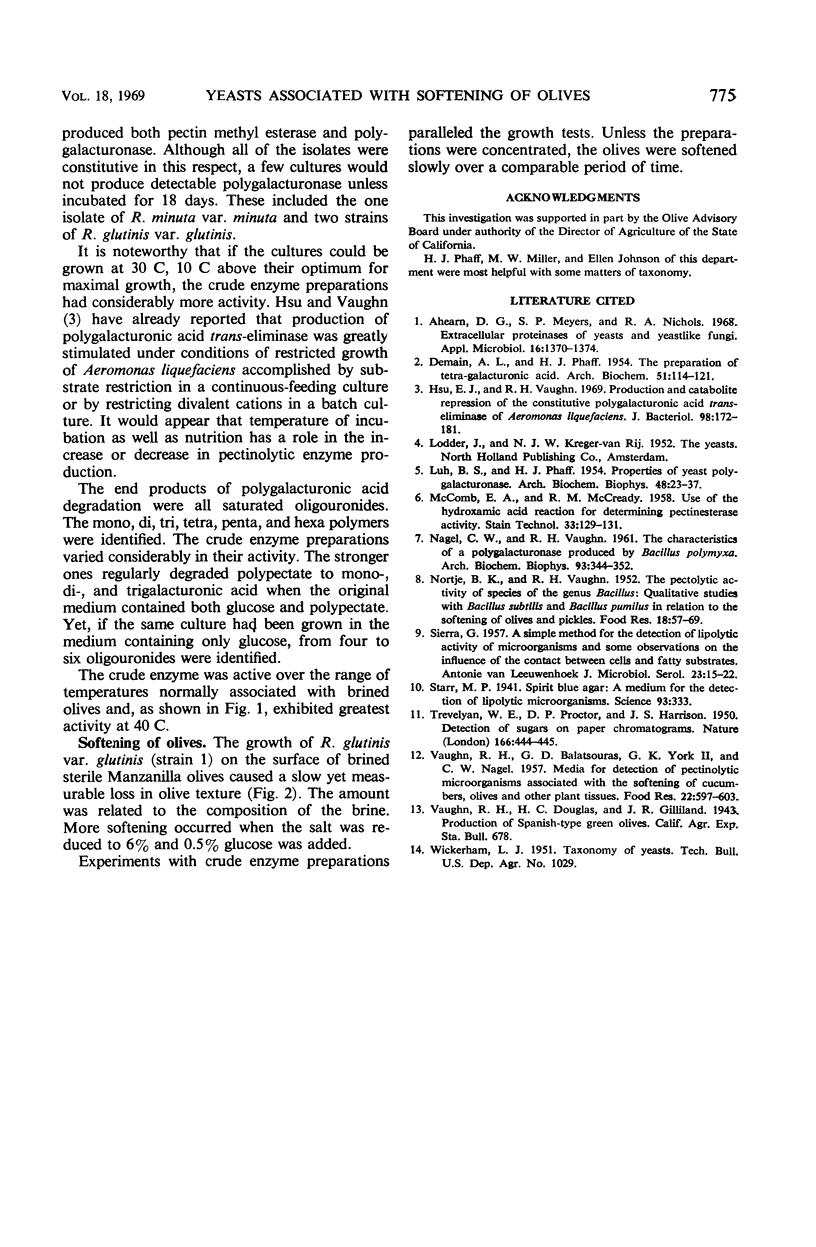Abstract
Pink yeasts identified as Rhodotorula glutinis var. glutinis, R. minuta var. minuta, and R. rubra produce polygalacturonases which cause a slow softening of olive tissue. Both pectin methyl esterase and polygalacturonase are produced when cultures are grown in appropriate media. Crude, cell-free dialyzed enzyme preparations measured viscosimetrically exhibited optimal activity on sodium polygalacturonate at pH 6.0 and 40 C, and were active in the range of pH 4.0 to 9.0 and 10 to 50 C. Cultures grown in sterilized olives and brine at pH 4.0 with sterile glucose added aseptically caused a slow softening of tissue as measured with a Christel texturometer. Similar results were obtained when crude, cell-free enzyme preparations were added to olives in buffer solution at pH 6.0 with Merthiolate. Commercial control of these yeasts is easy if anaerobic conditions can be provided. Otherwise, the industry has to resort to manual removal of the film from the brine surface, either by skimming or by flagellation.
Full text
PDF




Selected References
These references are in PubMed. This may not be the complete list of references from this article.
- Ahearn D. G., Meyers S. P., Nichols R. A. Extracellular proteinases of yeasts and yeastlike fungi. Appl Microbiol. 1968 Sep;16(9):1370–1374. doi: 10.1128/am.16.9.1370-1374.1968. [DOI] [PMC free article] [PubMed] [Google Scholar]
- DEMAIN A. L., PHAFF H. J. The preparation of tetragalacturonic acid. Arch Biochem Biophys. 1954 Jul;51(1):114–121. doi: 10.1016/0003-9861(54)90459-2. [DOI] [PubMed] [Google Scholar]
- Hsu E. J., Vaughn R. H. Production and catabolite repression of the constitutive polygalacturonic acid trans-eliminase of Aeromonas liquefaciens. J Bacteriol. 1969 Apr;98(1):172–181. doi: 10.1128/jb.98.1.172-181.1969. [DOI] [PMC free article] [PubMed] [Google Scholar]
- LUH B. S., PHAFF H. J. Properties of yeast polygalacturonase. Arch Biochem Biophys. 1954 Jan;48(1):23–37. doi: 10.1016/0003-9861(54)90301-x. [DOI] [PubMed] [Google Scholar]
- McCOMB E. A., McCREADY R. M. Use of the hydroxamic acid reaction for determining pectinesterase activity. Stain Technol. 1958 May;33(3):129–131. doi: 10.3109/10520295809111836. [DOI] [PubMed] [Google Scholar]
- NAGEL C. W., VAUGHN R. H. The characteristics of a polygalacturonase produced by Bacillus polymyxa. Arch Biochem Biophys. 1961 May;93:344–352. doi: 10.1016/0003-9861(61)90277-6. [DOI] [PubMed] [Google Scholar]
- SIERRA G. A simple method for the detection of lipolytic activity of micro-organisms and some observations on the influence of the contact between cells and fatty substrates. Antonie Van Leeuwenhoek. 1957;23(1):15–22. doi: 10.1007/BF02545855. [DOI] [PubMed] [Google Scholar]
- Starr M. P. SPIRIT BLUE AGAR: A MEDIUM FOR THE DETECTION OF LIPOLYTIC MICROORGANISMS. Science. 1941 Apr 4;93(2414):333–334. doi: 10.1126/science.93.2414.333. [DOI] [PubMed] [Google Scholar]
- TREVELYAN W. E., PROCTER D. P., HARRISON J. S. Detection of sugars on paper chromatograms. Nature. 1950 Sep 9;166(4219):444–445. doi: 10.1038/166444b0. [DOI] [PubMed] [Google Scholar]


